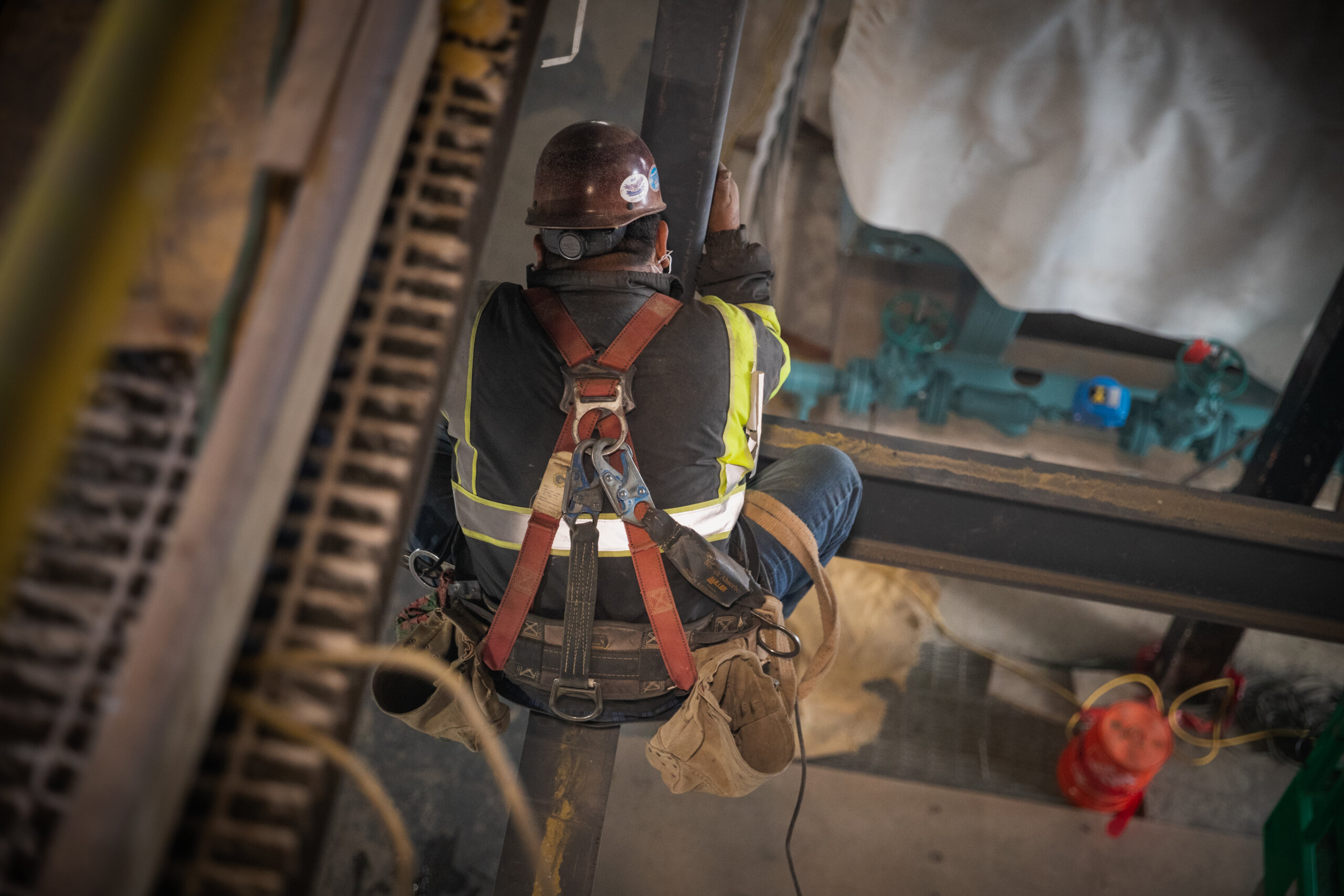No one sets out to violate OSHA regulations, but construction is a fast-moving industry. With tight deadlines, rotating crews, and complex worksites, it’s easy for safety standards to fall through the cracks.
The problem? OSHA violations come with hefty fines, project delays, and increased risks for workers. In 2023, fall protection violations alone led to over $50 million in penalties. Avoiding the most common pitfalls isn’t just about compliance—it’s about keeping your crew safe and your projects on track.
In this guide, I’ll break down the top OSHA violations in construction and offer practical steps to help Health & Safety Managers steer clear of costly mistakes.
The 3 Most Common OSHA Violations in Construction
The three most common OSHA violations in the construction industry are those related to fall protection, scaffolding, and hazard communication. Below I’ll go into detail about the reasons why they happen and what you can do to avoid them on your construction site.
1. Fall Protection (Standard 1926.501)
Falls are the leading cause of fatalities in construction, making fall protection the most frequently cited violation. This standard requires safeguards like guardrails, safety nets, and personal fall arrest systems for work at heights of six feet or more.
Why It Happens: Lack of training, improperly installed equipment, or a failure to inspect fall protection systems often lead to violations.
How to Avoid It:
- Train workers to identify fall hazards.
- Conduct daily equipment inspections to ensure guardrails and harnesses are in good condition.
- Use construction safety software to document inspections and corrective actions for better accountability.
2. Scaffolding (Standard 1926.451)
Scaffolding violations are another common issue, stemming from improper construction or misuse of scaffolds. OSHA mandates that scaffolding be designed and inspected by a qualified person.
Why It Happens: Crews sometimes skip daily inspections or ignore weight limits, leading to instability or collapse.
How to Avoid It:
- Assign a competent person to oversee scaffold setup and maintenance.
- Conduct pre-shift inspections using a digital checklist to ensure all scaffolds meet OSHA requirements.
3. Hazard Communication (Standard 1910.1200)
OSHA requires employers to inform workers about hazardous materials on-site, including proper labeling and access to Safety Data Sheets (SDS).
Why It Happens: Misplaced or outdated SDS documents and a lack of worker training contribute to violations.
How to Avoid It:
- Digitize your SDS library so workers can access information from their phones.
- Train crews on hazard communication practices during onboarding and follow up with regular refresher courses.
Avoid OSHA Violations in 3 Proactive Steps
As a Health & Safety Manager, there are a few things you can do to avoid OSHA violations, including prioritizing training, using digital tools, and staying audit-ready (read: organized and up-to-date).
1. Prioritize Training
Training is the foundation of compliance. Workers need to understand OSHA standards, recognize hazards, and know how to respond. Regular toolbox talks and hands-on training sessions help reinforce these principles.
Pro Tip: Use constructions safety software like Corfix to track training completion and set automatic reminders for certifications that need renewal.
2. Use Construction Safety Software for Inspections and Reporting
Manual processes leave too much room for error. Constructions safety software streamlines safety inspections, making it easier to identify hazards and take corrective action.
How They Help:
- Standardize safety checklists to ensure no step is missed.
- Log hazard reports in real time, complete with photos and notes.
- Track follow-ups to confirm every issue has been resolved.
3. Stay Audit-Ready
The best way to avoid violations is to treat every day like an audit is coming. Keep your records organized and up to date, from training logs to inspection reports.
Pro Tip: Constructions safety software consolidates all safety documentation in one place, making it easy to retrieve during audits or inspections.
Conclusion: Safer Jobsites Start with Strong Compliance
Avoiding OSHA violations doesn’t have to be complicated—it’s about building safety into your daily routines. By focusing on training, using the right tools, and staying proactive, Health & Safety Managers can reduce risks and keep projects running smoothly.
Ready to simplify safety management? Schedule a demo with Corfix today and see how we can help you stay compliant effortlessly.
